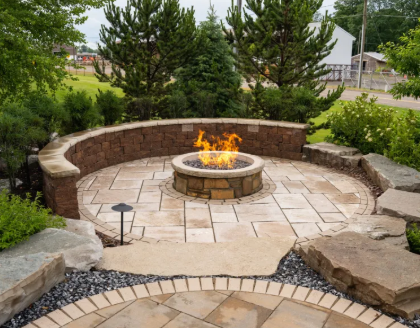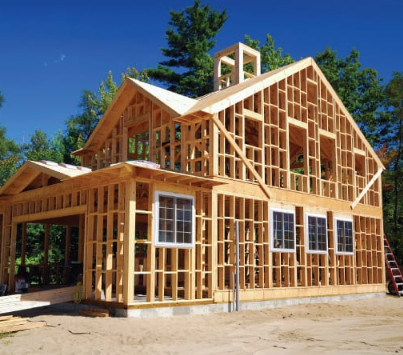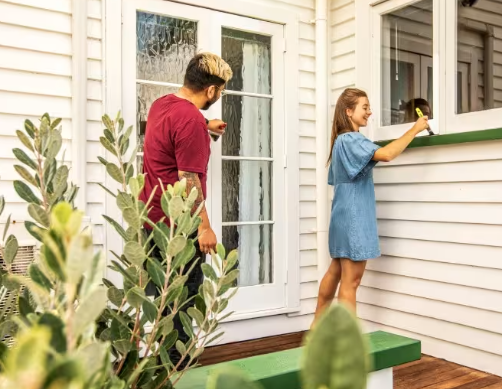Americans renovate homes for style and comfort. But certain popular updates can surprisingly decrease your property’s overall market value.
In the United States, newly built homes are not sold as bare concrete shells—they come fully finished. Once the house is handed over, the owner simply moves in personal belongings and furniture (like beds, tables, chairs, refrigerators, washing machines, dryers, and other movable items). The degree of finish can be discussed with the developer during the construction contract stage, allowing homeowners to choose the style for each room. Essentially, all fixed elements are decided in advance—such as stoves, sinks, countertops, dishwashers, central air-conditioning, bathtubs, vanities, mirrors, built-in closets, lighting fixtures, doors, windows, and wall paint. By the time construction is complete, the interior is already finished.
If the homeowner isn’t satisfied with certain features, they can hire professionals to renovate—or do it themselves. Many Americans are avid DIYers. Tools, materials, equipment, and reference books for home improvement are easy to find in stores. This do-it-yourself habit is often cultivated from a young age, with woodworking or shop classes offered in high school.
More American houses are built from wood, with interior walls made of drywall over a hollow wooden frame. This makes it relatively easy to remodel or install new features. (This is also one reason why China exports so many different kinds of electric DIY tools to the U.S.—there’s a big market for them.)
It’s common for American households to own tools such as electric saws, drills, screw guns, belt sanders, and even table saws, jigsaws, and wood carving machines. Many people have space at home—such as a garage or basement—to store tools and even set up a small workshop.
Renovations Require a Permit
Because more U.S. houses are wood-framed, improper renovations can create structural problems that affect safety. For this reason, many home improvement projects require a permit. Without one, you could face fines, and your homeowner’s insurance might refuse to cover renovation-related damages. Unauthorized work can also cause problems when selling the home—buyers may demand that illegal changes be removed, increasing selling costs.Permits have two major benefits:
1. You don’t have to worry about surprise inspections during the project.2. If problems arise, you may be eligible for state-level construction accident insurance.
The process is straightforward: the homeowner applies at city hall, hires a contractor to prepare design plans, submits them for approval, and—if approved—begins work. Inspectors from city hall may check in during the renovation, and a final inspection is required for official sign-off.
Examples of Outdoor Projects That Require a Permit
Roof: Roofs in the U.S. have a lifespan of 15–20 years and must be replaced afterward, which requires a permit. Replacing a few shingles doesn’t, but replacing the entire roof—or adding a new layer over the old one—does.Exterior walls: Replacing more than one-quarter of a wall’s surface requires a permit. Adding a new door or window also requires approval.
Decks: A ground-level deck usually doesn’t need a permit, but if it’s more than one foot high, you’ll need one for safety reasons—high decks can cause injuries or even structural problems if built poorly.
Paving and retaining walls: Laying patio tiles on flat ground doesn’t require a permit. But if the yard is sloped and you need a retaining wall, a permit is necessary because a poorly built wall can cause landslides.
Sprinkler systems: Installing lawn sprinklers requires a permit because water and electricity impact the home’s safety. The depth of the pipes is regulated—poor installation could cause leaks that damage the foundation.
Outdoor lighting: Installing wired outdoor lights requires a permit, but solar-powered garden lights do not. Christmas lights and holiday decorations also don’t require permits, but homeowners should be mindful of electrical load and use surge-protected power strips to prevent fire hazards, especially in snowy weather.
Storage sheds: Whether you need a permit depends on the shed’s size. Adding plumbing or electricity also requires approval, and water pipes must be buried at least six feet underground to prevent freezing in winter.
Fences: Fence construction requires a permit, partly to ensure they don’t encroach on public land. If required to build the fence further inside your property line, your yard space will be reduced. An alternative is planting a hedge, which usually doesn’t require approval.
While permits may seem like a hassle, the process is simpler than many expect—and it’s all about protecting your safety and your neighbors’.
Six Renovations That Could Lower Your Home’s Value
When planning home improvements, most people think about how to increase their property’s value. While updating kitchens and bathrooms usually makes a home more appealing and valuable, some renovations can actually hurt resale value.According to *Remodeling* magazine’s Cost vs. Value Report, these six changes may lower your home’s market value—or make it harder to sell:
1. Converting the garage: Some homeowners turn garages into living spaces to add square footage. However, many buyers—especially in colder or rainy areas—want a functioning garage.
2. Removing a bedroom or bathroom: Combining small rooms into larger spaces can be a plus in older homes, but eliminating a bathroom or turning a bedroom into a walk-in closet often reduces value.
3. Overly personalized design: While adding personal style is natural, extreme or unusual design choices can turn off potential buyers.
4. Too much bold color: Brightly painted walls or highly colorful flooring may suit your taste, but neutral colors tend to appeal to more buyers.
5. Adding a pool: Pools can be attractive in warm states like Arizona, Florida, or California, but in colder regions, they offer little use and require costly upkeep.
6. Unpermitted work: Any renovation done without proper permits can raise red flags for buyers and may even require removal or expensive corrections before a sale.
Smart Budgeting Tips for Home Renovations
When planning renovations, balancing cost and value is key—especially for first-time homeowners. Start by prioritizing "high-impact, low-cost" updates: swapping outdated cabinet hardware (like knobs and pulls) can refresh a kitchen for under $100, while repainting trim in a crisp white adds instant polish without big spending. For bigger projects, shop seasonal sales at home improvement stores—late summer is ideal for scoring discounts on lumber and outdoor materials, as stores clear inventory for fall. Don’t overlook secondhand options: Facebook Marketplace or local "reuse centers" often sell gently used fixtures (like sinks or light fixtures) at 50% off retail, perfect for DIYers on a budget. And always set aside 10–15% of your total budget for unexpected costs, like hidden water damage behind walls or mismatched materials—this buffer prevents last-minute scrambles that could derail your project.
Common DIY Renovation Mistakes to Avoid
Even seasoned DIYers can slip up, and small errors often lead to big headaches later. One frequent misstep is skipping prep work: painting over dirty walls or installing flooring without leveling the subfloor will cause peeling or uneven surfaces within months. Another issue is underestimating tool needs—using a regular drill instead of a hammer drill for concrete walls, for example, wastes time and risks damaging both the tool and your walls. Safety is also often overlooked: many homeowners forget to turn off power before working on light fixtures or skip wearing eye protection when cutting wood, leading to preventable injuries. And don’t rush measurements! A 1/4-inch mistake when cutting countertops or installing a new door can mean wasted materials and extra trips to the store. Take time to double-check sizes, test tools on scrap materials first, and follow step-by-step guides—patience saves more time (and money) than rushing through the process.





